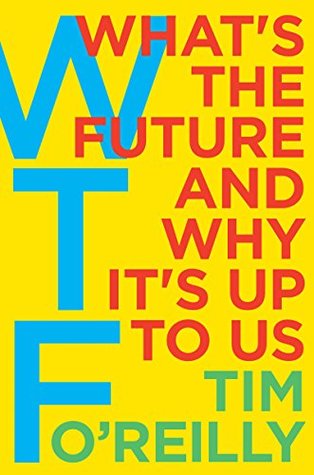More on this book
Community
Kindle Notes & Highlights
by
Tim O'Reilly
Read between
August 5 - October 10, 2020
For starters: An AI running on a $35 Raspberry Pi computer beat a top US Air Force fighter pilot trainer in combat simulation.
But just because we can see that the future is going to be very different doesn’t mean that we know exactly how it’s going to unfold, or when. Perhaps “WTF?” really stands for “What’s the Future?” Where is technology taking us? Is it going to fill us with astonishment or dismay? And most important, what is our role in deciding that future? How do we make choices today that will result in a world we want to live in?
So what makes a real unicorn of this amazing kind? 1. It seems unbelievable at first. 2. It changes the way the world works. 3. It results in an ecosystem of new services, jobs, business models, and industries.
Successful innovators don’t ask customers and clients to do something different; they ask them to become someone different. . . . Successful innovators ask users to embrace—or at least tolerate—new values, new skills, new behaviors, new vocabulary, new ideas, new expectations, and new aspirations. They transform their customers.
All of these technologies are additive, and addictive. As they interconnect and layer on each other, they become increasingly powerful, increasingly magical. Once you become accustomed to each new superpower, life without it is like having your magic wand turn into a stick again.
And that gets me to the third characteristic of true unicorns: They create value. Not just financial value, but real-world value for society.
After the fall of Rome, the ability to make monumental structures out of concrete was lost for nearly a thousand years. It could happen to us.
The magical technologies of today—and choices we’ve already made, decades ago, about what we value as a society—are leading us down a path with complex contingencies, unseen dangers, and decisions that we don’t even know we are making.
Maps aren’t just representations of physical locations and routes. They are any system that helps us see where we are and where we are trying to go.
“I don’t know what’s the matter with people: they don’t learn by understanding; they learn by some other way—by rote, or something,” Feynman wrote. “Their knowledge is so fragile!”
“Ideas are a dime a dozen. It’s implementation that matters.” The future isn’t just imagined. It is built.
When the best leader leads, the people say “We did it ourselves.”
Kim explained to me that “writing the press release first is a mechanism to make customer obsession concrete.” As are two-pizza teams producing services with hardened APIs. “Amazon does a better job of creating these kinds of mechanisms for its corporate values than any other company I’ve seen,” Kim added. “And it starts from first principles (values) more than other companies as well.”
“I tell people, ‘Don’t follow my orders. Follow the orders I would have given you if I were there and knew what you know.’”
Often, when new technology is first deployed, it amplifies the worst features of the old way of doing business. Only gradually do individuals and organizations realize, through a cascading network of innovations, how to put new technology properly to work.


